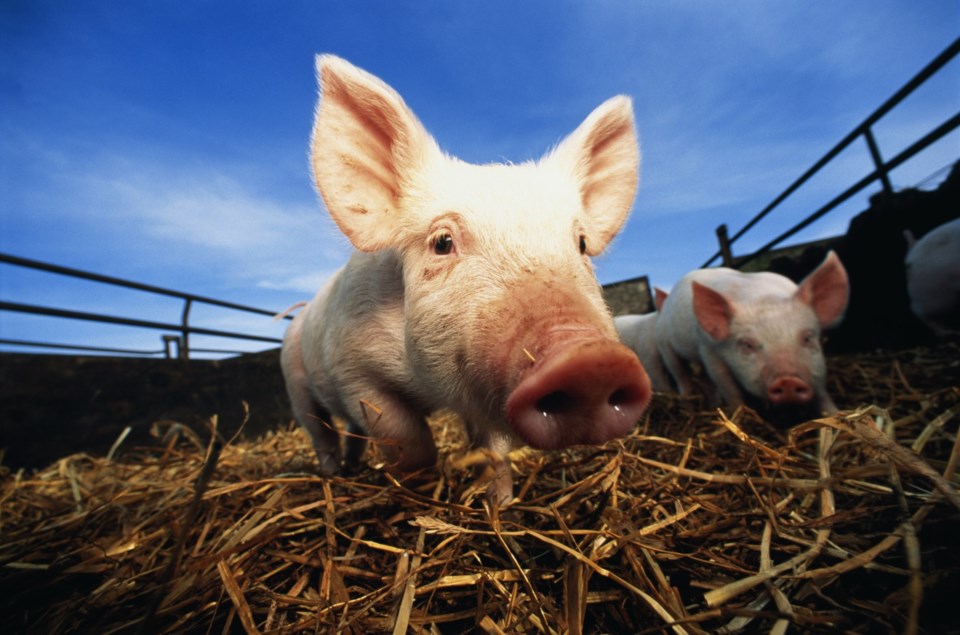WESTERN PRODUCER — The wave of African swine fever continues to wash across the world, growing ever closer to Western Canada’s pig herds.
But even if it reaches the Prairies, it doesn’t mean hog farmers will drown, veterinarians, emergency response officials and the pork industry believe.
“By preparing and taking the necessary steps, we can minimize the damage of an outbreak,” said Todd Bergen-Henengouwen, a veterinarian and southern Alberta farmer on the national Animal Health Emergency Management Project.
“We might not be able to completely stop it from entering… but by taking steps to respond, we can minimize the damage.”
ASF has spread across the planet since first appearing in East Asia, moving west from China across Russia, to the Atlantic coast of western Europe, south into India and Indonesia, and appearing in the Dominican Republic, just a few hundred kilometres from North America.
Its arrival on this continent is taken as a given by most in the North American hog and pork industry, despite cross-border commitments to biosecurity.
Wherever it hits, it is devastating for trade. Countries or regions with infected herds generally find themselves cut off from export markets.
While some countries and regions entirely or mostly feed a domestic market, Western Canada’s pigs and pork are overwhelmingly exported. Many pigs go to the United States, especially from Manitoba, but large amounts of Canadian pork are also exported to Asia. Border closures would leave Canada with far more pork than its small human population can consume.
For Manitoba, with about 80 percent of its hogs and pork exported, border closures are a nightmare.
Fortunately for farmers and the rest of the industry, much preparation has already been done. Action plans have been formulated. Government authorities have been engaged in developing rapid response protocols.
Canadian and American authorities and industries have worked together to prepare for the implications of an outbreak.
Much of the emergency planning focuses on regionalization, which involves breaking the continent into zones. In regionalization, only hog producers and hog movement within directly affected zones would be affected by an outbreak, rather than the entire continent.
Manitoba Agriculture Minister Derek Johnson made this point in his address to the Manitoba Swine Seminar.
“We are so reliant on our trade, as our pigs head south and feed comes north,” said Johnson.
“Those supply chains can’t be disrupted. We need to look at our zones, rather than the 49th parallel being a zone.”
An obvious zone boundary is the Manitoba-Ontario border at West Hawk Lake, where the two halves of the country are split by more than 1,000 kilometres of Canadian Shield. But there are other natural geographic zones too.
Bergen-Henengouwen said experience elsewhere has shown that early detection is key to crushing an outbreak when it begins.
But he made a point by asking the hundreds of hog farmers and hog barn staff at the Manitoba Swine Seminar a question:
“How many (of you) know what the signs and the symptoms are of ASF, or foot and mouth disease?”
Few put up their hands.
Getting educated on the symptoms of ASF is a crucial first step for controlling the disease before it gets out of control, he said.
“If we can shorten that time to detection and take the necessary actions to respond to that, it can greatly, greatly reduce the magnitude of a disease outbreak,” said Bergen-Henengouwen.
Once an outbreak has occurred, producers must immediately contain it through strict biosecurity measures on-farm and with service providers and suppliers. Within a region, farmers and others must react quickly.
In both situations, having established response plans is critical. Every farm should have a site map, an emergency contacts list, contingency plans and visitor logs before an outbreak occurs. That will make the response quicker and more effective, Bergen-Henengouwen said.
Such planning has already proven itself in previous avian influenza outbreaks in the poultry industry.
In British Columbia in 2004, 42 farms were infected and more than 10 million birds were killed in cleaning up the outbreak. Controls were embraced and in the 2014 outbreak, only 11 farms were infected, with much less loss.

